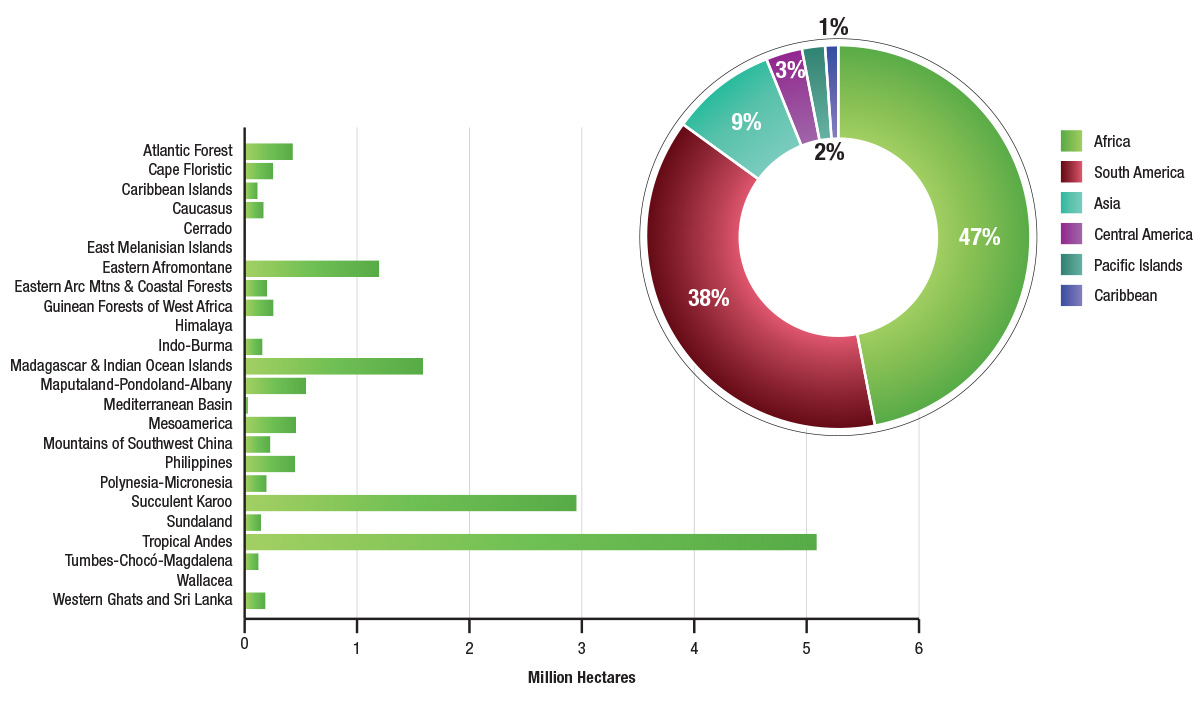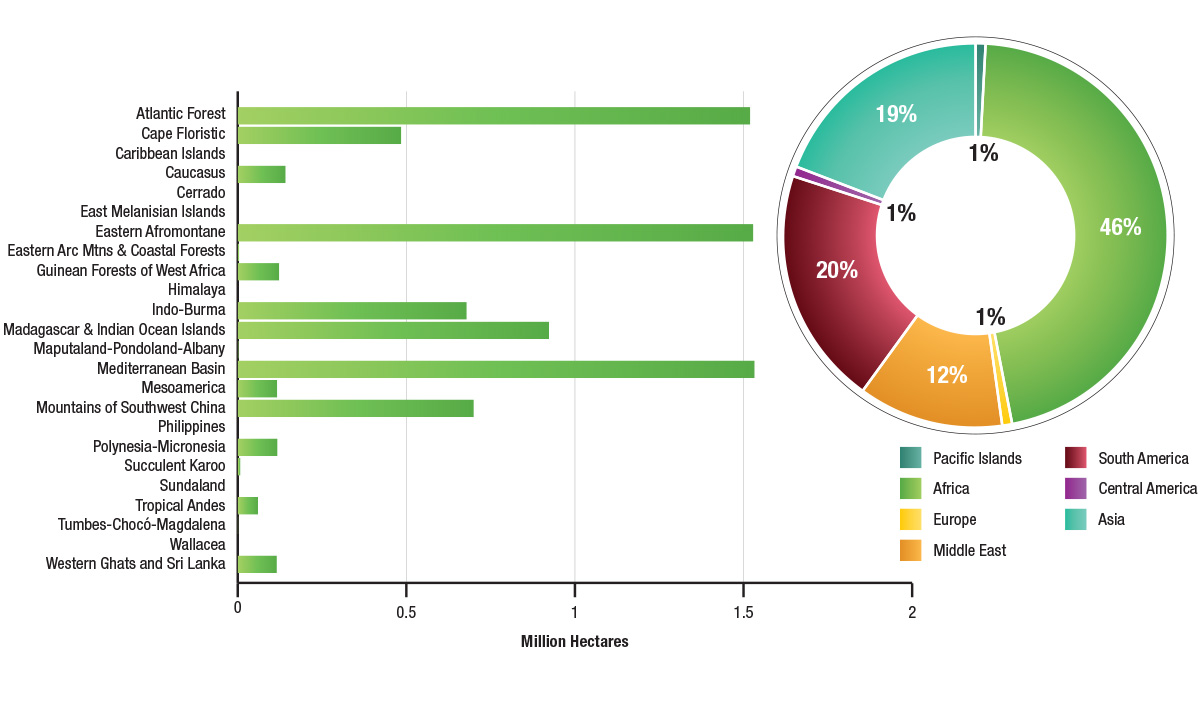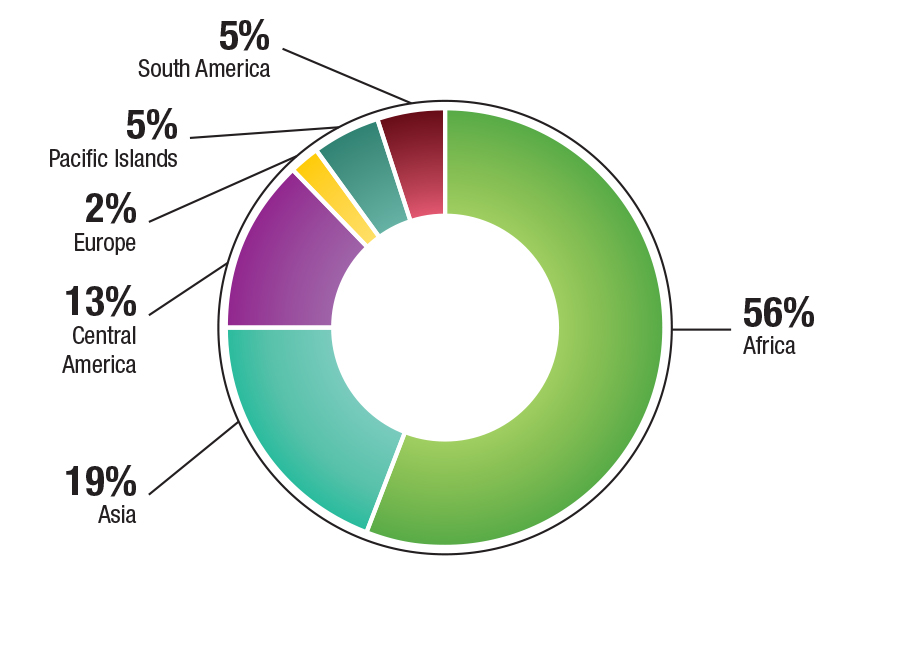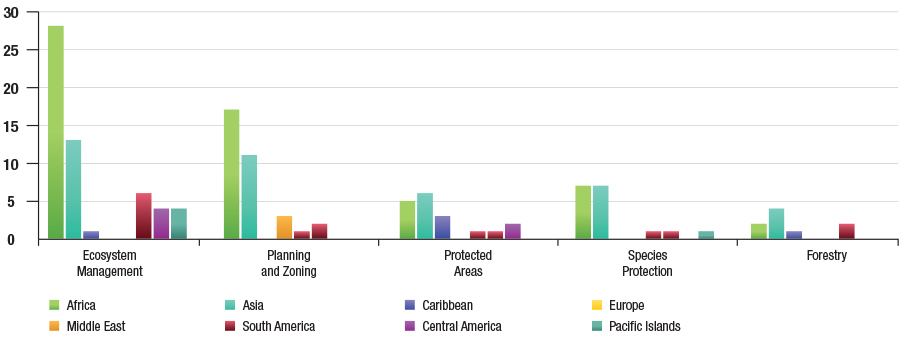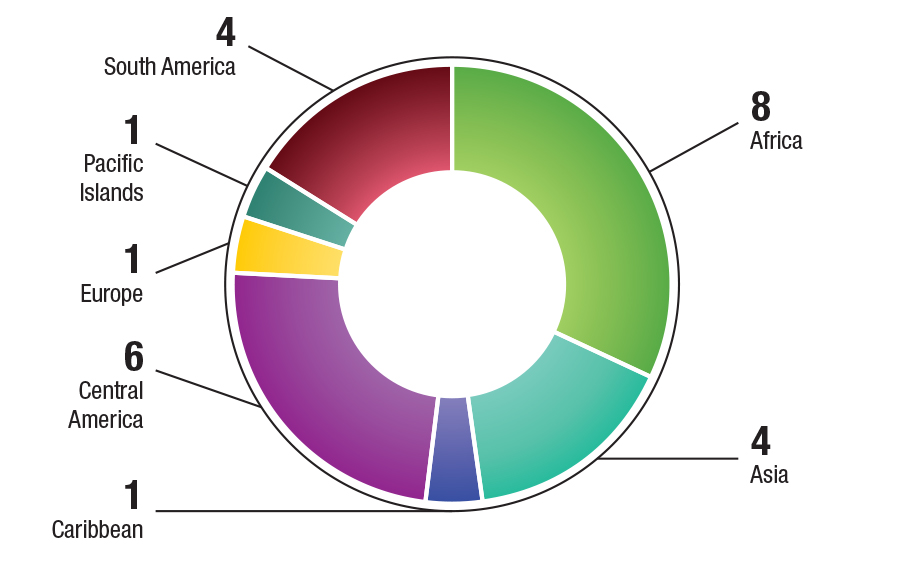Biodiversity
Biodiversity, the amazing variety of life on the planet, is fundamental to thriving ecosystems and communities. Plants, animals, fungi and even micro-organisms have important roles to play in maintaining a planet that supports 7.6 billion people. CEPF’s primary focus is on conserving biodiversity.
CEPF’s goal: Improve the status of globally endangered species and the critical ecosystems that support those species.
Protected Areas
Created or expanded14.7 million hectares
2001 through fiscal year 2017
Key Biodiversity Areas with Strengthened Management
45.7 million hectares2001 through fiscal year 2017
Production Landscapes with Strengthened Biodiversity Management
Total: 8 million hectares2001 through fiscal year 2017
Civil Society Capacity
CEPF was established to conserve biodiversity by delivering financial resources and technical assistance to civil society—nongovernmental organizations (NGOs), communities, indigenous peoples organizations, academic institutions and private companies—to empower local people to take the lead.
CEPF’s goal: Strengthen the capacity of civil society to be effective as environmental stewards and leaders in the long-term conservation of biodiversity.
Percentage Change in Capacity of CEPF-Supported Organizations
Overall average increase: 13 percent2010–2017
* Note: CEPF gathers this data via the Civil Society Tracking Tool, which CEPF began using in 2010. The chart includes data for the 198 grantees who had completed assessments by the end of fiscal year 2017.
Note: CEPF defines “networks/partnerships” as a connection (alliance, network, partnership) among civil society groups and possibly other sectors. The relationship can be either formal or informal, but it must have a lasting benefit beyond the immediate project. Examples include an alliance of fishermen to promote sustainable fisheries practices; a network of environmental journalists; a partnership between an NGO and a private sector partner to improve biodiversity management on private lands; and a working group focusing on reptile conservation.
Human Well-Being
Through its support to organizations and communities in developing and transitional countries in the biodiversity hotspots, CEPF seeks to help the people of the biodiversity hotspots find ways to support themselves now and in the future by conserving the biodiversity and ecosystems they rely on for food, water, soil fertility, medicines, commercial products and cultural integrity.
CEPF’s goal: Improve the well-being of people living in and dependent on critical ecosystems within the world’s biodiversity hotspots.
* Note: CEPF gathers this data via the Civil Society Tracking Tool, which CEPF began using in 2010. The chart includes data for the 198 grantees who had completed assessments by the end of fiscal year 2017.
Communities have received non-cash livelihood benefits such as improved access to clean water, strengthened land tenure and increased representation in decision-making processes. Since data collection commenced in 2017 to calculate the number of people in these communities, 56,265 people have been recorded as receiving non-cash benefits, 27,745 of whom are women and girls.
Additionally, since CEPF began grant making in 2001, more than 100,000 people have received training in natural resource management, alternative livelihoods such as beekeeping, financial management, community leadership and a range of other topics. Where the sex of the trainee was reported, 41.9 percent were women.
In 2017, CEPF started to record the number of individuals receiving cash benefits, such as increased income or employment. Within this short period of time, 42,992 people were recorded as receiving cash benefits, and where the sex of the beneficiary was reported, 33.2 percent were women.
Enabling Conditions
Certain conditions are necessary for establishing and maintaining biodiversity conservation. Among the most important are policies that promote conservation action, availability of financial resources and the development of biodiversity-friendly practices in the private sector.
CEPF’s goal: Establish the conditions needed for the conservation of biodiversity.
Number of Laws, Policies and Regulations Enacted or Amended, by Theme and Region
Total: 1752001–2017


